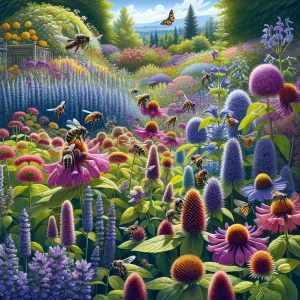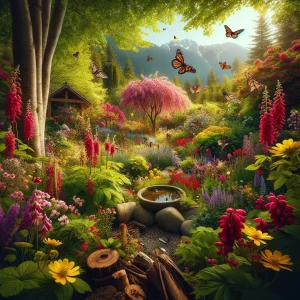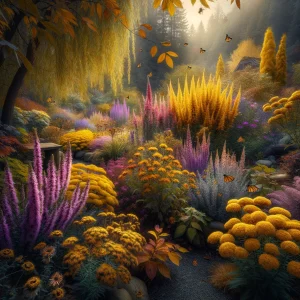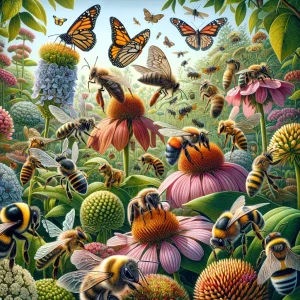In the lush landscapes of British Columbia, gardens buzz with life, serving as critical havens for pollinators. Bees, butterflies, and countless other species are indispensable in our ecosystems and food production, pollinating plants that yield fruits, vegetables, and seeds. This blog post explores the importance of pollinator gardens and provides a guide to creating your own in British Columbia’s unique climate, addressing common challenges and offering seasonal maintenance tips.

The Importance of Pollinators
Pollinators are the unsung heroes of the natural world. Over 75% of the world’s flowering plants depend on these tiny workers for reproduction, contributing to diverse food products, fibres, and medicines. In ecosystems, pollinators support the growth of trees and flowers that provide shelter and food for wildlife, contributing to healthy and resilient environments.
Despite their significance, pollinators face habitat loss, pesticides, and climate change threats. Creating pollinator-friendly gardens is a tangible step toward conserving these vital creatures and the services they provide.

Crafting a Pollinator-Friendly Garden in British Columbia
Plant Selection
The foundation of a pollinator garden is its plant life. Opt for a mix of native plants that flower at different times of the year to provide a consistent food source. In British Columbia, consider including:
- Spring: Red-flowering currant (Ribes sanguineum) and Pacific bleeding heart (Dicentra formosa)
- Summer: Lavender (Lavandula), Bee balm (Monarda), and Purple coneflower (Echinacea purpurea)
- Fall: Goldenrod (Solidago spp.) and New England aster (Symphyotrichum novae-angliae)
Incorporating plants like willows (Salix spp.) and maples (Acer spp.) can also offer early pollen and nectar sources.

Habitat Features
Beyond plant selection, consider adding elements that cater to the needs of various pollinators:
- Water sources: A shallow bird bath or a dish with stones can quench the thirst of visiting pollinators.
- Shelters: Leave some areas of your garden a little wild, with twigs or dead wood piles for nesting and hibernation.
- No pesticide: To protect the health of pollinators, avoid using pesticides in your garden.

Overcoming Challenges
Many gardeners are deterred by misconceptions about the effort required to maintain a pollinator garden. However, with native plants adapted to the local climate and soil, such gardens can be surprisingly low maintenance. Another common challenge is the fear of attracting stinging insects. Focusing on various plants will attract a broad spectrum of pollinators, minimizing the concentration of any one species, such as bees, that might cause concern.

Seasonal Maintenance Tips
- Spring: Clean up winter debris, but wait until temperatures consistently exceed ten °C to protect overwintering pollinators. Plant early bloomers.
- Summer: Ensure your garden is well-watered, especially during dry spells. Deadhead flowers to encourage continued blooming.
- Fall: Plant bulbs for spring and add mulch to protect plants and insects over the winter. Leave seed heads and dead plant material as food and shelter for wildlife.
- Winter: Plan for the following year. This is a great time to order seeds and plan new additions to your garden.
Creating a pollinator-friendly garden in British Columbia supports the health of our ecosystems and food production and brings beauty and life to your outdoor space. By selecting the right plants and designing with pollinators in mind, you can contribute to a global effort to protect these essential creatures. Embrace the challenges, and remember, each garden is a step toward a more sustainable and pollinator-friendly world.